San Diego is known for its pristine beaches and beautiful blue seas – but what’s the City’s drinking water like? Is it safe to drink the tap water in San Diego? And are there any contaminants in the water that violate guidelines set by the Environmental Protection Agency?
Find out in the complete San Diego drinking water safety and quality guide.
📌 Key Takeaways:
- The drinking water in San Diego, California is considered generally safe to drink.
- The City of San Diego’s water contains a number of contaminants in trace levels that don’t exceed the EPA’s Maximum Contaminant Levels.
- The 5 biggest problem contaminants in San Diego tap water are arsenic, disinfection byproducts, chromium-6, radium, and uranium.
Table of Contents
- 🚰 Can You Drink San Diego Tap Water?
- 🗺️ Where Does the Tap Water in San Diego Come From?
- 📉 Who Regulates San Diego Drinking Water?
- 🧪 San Diego Annual Water Quality Report
- ☣️ Contaminants Found Above Guidelines in Tap Water in San Diego
- 🧫 Main Contaminants Found in San Diego Tap Water
- ⛲ San Diego Drinking Water in Public Places
- 💬 Frequently Asked Questions
🚰 Can You Drink San Diego Tap Water?
So, is San Diego tap water safe to drink?
Yes, you can drink tap water in San Diego because the water is legally safe to drink, meaning that any contaminants present are found in lower concentrations than the EPA’s Maximum Contaminant Levels.
The US EPA sets standards that the majority of public water systems – including those in San Diego – must adhere to for tap water safety and quality. San Diego tap water doesn’t violate EPA regulations under the Safe Drinking Water Act (SDWA), which means that it’s technically safe to drink.
We say “technically” because being legally safe doesn’t necessarily make San Diego’s tap water as clean, pure, and healthy as you’d probably prefer. The City’s water still contains trace levels of various unpleasant contaminants that you’d probably prefer not to drink.
According to the EPA, the majority of drinking water contaminants – including heavy metals, chemicals, and radiological contaminants – are safe to drink in trace amounts. This is based on the EPA’s evaluation of research that currently exists for these contaminants. The only exception is pathogens like bacteria, and lead – these can’t be present at all in water.
However, organizations like the Environmental Working Group (EWG) believe that the EPA allows the presence of dangerous levels of certain tap water impurities, and that the Maximum Contaminant Levels set by the EPA are too high.
The EWG has produced its own stricter Health Guidelines and produced Tap Water Databases for cities around the country, highlighting the contaminants in local water supplies that exceed these Guidelines. However, public water systems aren’t legally obliged to adhere to the EWG Guidelines.
We’ve analyzed the EWG Tap Water Database for the City of San Diego, and 16 contaminants have been listed to exceed the EWG’s Health Guidelines.
So, according to the EWG, San Diego water isn’t safe to drink. But legally, according to EPA regulations, it is.
It wouldn’t be an accurate assessment of water safety without considering lead. Lead is a toxic heavy metal that has serious health concerns. It gets into water supplies through old lead distribution pipes, and it’s invisible, tasteless, and odorless, so water could contain extremely high levels of lead and you wouldn’t know.
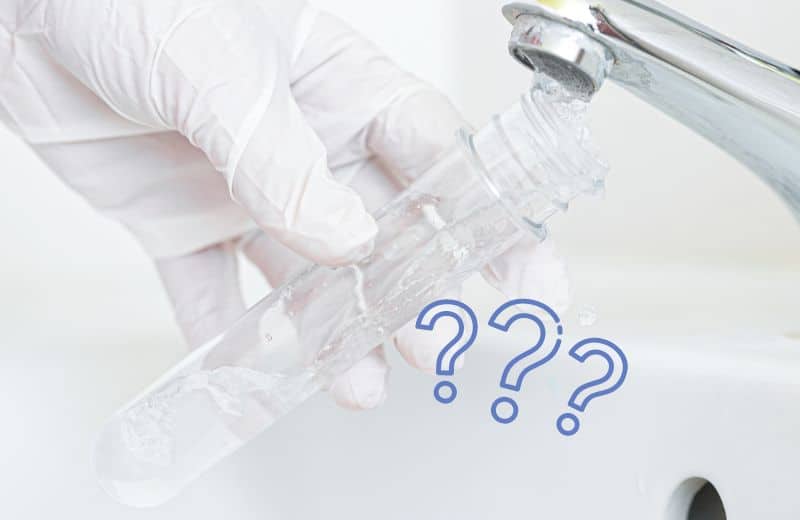
A 2018 news report highlighted that San Diego officials “don’t know” what two-thirds of the water distribution lines in the City are made of, but in the previous year, a Senior Chemist in the City’s Water Department said there were no lead lines at all.
From what we can tell, it looks like there are still lead service lines in San Diego. You can find out more about lead service line updates and check out a lead service line status map on this page. If you’re concerned, get your water tested for lead.
👉 Extra reading: Check out the states with the worst drinking water quality.
🗺️ Where Does the Tap Water in San Diego Come From?
90% of the water in San Diego is imported from Northern California and the Colorado River Aqueduct, connected to the State Water Project. This water is purchased by the City since it can’t be obtained locally – San Diego’s water needs greatly exceed the local water supply that can be acquired by rainfall.
The water is then distributed to the City’s 9 reservoirs, which also capture local rainwater runoff and store up to 300,000 acre-feet of water.
The majority of San Diego tap water is sourced from surface water supplies (meaning that the water is at ground level, not underground in springs or aquifers).
Surface water quality is traditionally poorer than groundwater quality because lakes, rivers, and other surface waters are more susceptible to pollution from runoff and air particles. That means you’re more likely to find contaminants from industrial pollution and human activities in the water supply.
A small percentage of water in San Diego is sourced from one of 5 groundwater basins in the City, including wells in the San Diego River Valley Groundwater Basin.
There are three drinking water treatment plants in San Diego:
- Alvarado Water Treatment Plant
- Miramar Water Treatment Plant
- Otay Water Treatment Plant
The water treatment processes in these plants are very similar, although different plants use different chemical disinfectants for primary disinfection (Mirimar and Alvardo use ozone disinfection, while Otay uses chlorine dioxide). In all plants, chloramine (a combination of chlorine and ammonia) is used for secondary disinfection.
Alongside disinfection, water is treated to remove physical particles with methods including coagulation, flocculation, and filtration, before being distributed around the community water system to homes and businesses.

📉 Who Regulates San Diego Drinking Water?
The City of San Diego tap water is managed by the San Diego County Water Authority and regulated by the Environmental Protection Agency (EPA) and the Public Utilities Department.
The City must treat its public drinking water according to the EPA’s National Primary Drinking Water Regulations, which list more than 90 regulated contaminants in water and establish a Maximum Contaminant Level (MCL) for each. MCLs are the maximum concentrations of certain contaminants that the EPA allows in water based on research into their health effects.
Some contaminants also have Maximum Contaminant Level Goals (MCLGs), which tend to be slightly higher than the MCLs and are the maximum levels at which these contaminants can be present with no adverse health effects.
It’s important to note that not all contaminants are regulated by the EPA – and this is a source of controversy. Many disinfection byproducts, VOCs, pharmaceuticals, and PFAs don’t currently have legal limits.
Water in San Diego is routinely tested by the Public Utilities Department to ensure its safety and compliance with EPA regulations. California has also produced Public Health Goals, and water quality measurements are taken every year to ensure that these PHGs aren’t exceeded.
🧪 San Diego Annual Water Quality Report
San Diego produces an annual Water Quality Report (or Consumer Confidence Report) for its tap water customers. The latest Report for San Diego’s drinking water is dated from January to December 2021 and shares information including:
- The water source
- What the water contained prior to treatment
- Highlights relating to water quality from the year
- How water is treated
- Which contaminants are present in the treated water, and how they compare to EPA MCLs
The Report shows that no contaminants were detected at levels that violate EPA Standards or the SDWA. However, there are still traces of contaminants present in San Diego tap water.
For example, an average of 0.5 PPM of fluoride in the water was listed in the Report – well below the EPA’s MCL of 2 PPM, but perhaps higher than you’d prefer to drink given the controversy linked to community fluoridation.
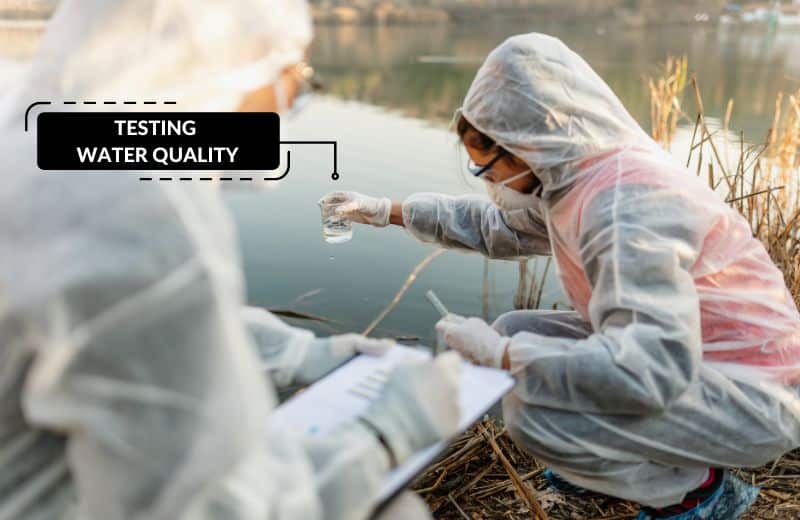
Some of the contaminants listed, which were detected in lower concentrations than the EPA MCLs, include:
- Fluoride
- Uranium
- Copper
- Various disinfection byproducts
The Report also shares a table of detected unregulated contaminants, including:
- Boron
- Hexavalent chromium
The City also provides two separate reports: one on the non-detected parameters in San Diego tap water, and one on the additional mineral, metal, and physical water parameters.
We recommend reading the most recent Report, researching any contaminants you’re concerned about, and comparing the data to previous Reports (found here). Keep in mind that EPA regulations do occasionally change, which means the information listed is only guaranteed to be accurate for the specific reporting period.
☣️ Contaminants Found Above Guidelines in Tap Water in San Diego
San Diego residents don’t, at least, have to worry about any contaminants in their water violating federal regulations. However, many of these contaminants do exceed EWG Health Guidelines.
Just to recap, the EWG is an independent organization and its Health Guidelines aren’t legally enforceable. However, you might agree that trace contaminants are potentially dangerous at level levels.
If so, you’ll be interested to learn which contaminants exceed these EWG Health Guidelines:
Arsenic
Arsenic occurs naturally in the earth’s crust and is considered one of the most dangerous water contaminants, causing long-term health effects if high levels of this contaminant are consumed in water. 0.0901 PPB (parts per billion) of arsenic was detected in San Diego tap water- 23x the EWG’s Health Guideline of 0.004. That’s still a fraction of the official legal limit of 10 PPB, but is San Diego tap water safe to drink – really – if it contains arsenic?

Haloacetic acids (HAA5)† and Haloacetic acids (HAA9)†
HAA5 and HAA9 are two of the most common types of haloacetic acids produced as a result of chemical disinfection. These disinfection byproducts have been linked to increased cancer risk. In San Diego tap water, 9.57 PPB and 18.1 PPB of HAA5 and HAA9 were detected – between 96x and 302x the EWG’s Health Advisories of 0.1 PPB and 0.06 PPB. The EPA currently doesn’t regulate HAA9 at all, but HAA5 has a legal limit of 60 PPB.
Hexavalent Chromium
Hexavalent chromium (chromium-6) is the most dangerous form of chromium in tap water that can’t be easily removed with most filter systems. According to the EPA and the Safe Drinking Water Act, chromium-6 isn’t dangerous enough to have a legal limit, despite its links to liver, skeletal, and reproductive effects. 0.0421 PPB of hexavalent chromium was detected in San Diego water – 2.1x the EWG’s Health Guideline of 0.02 PPB.
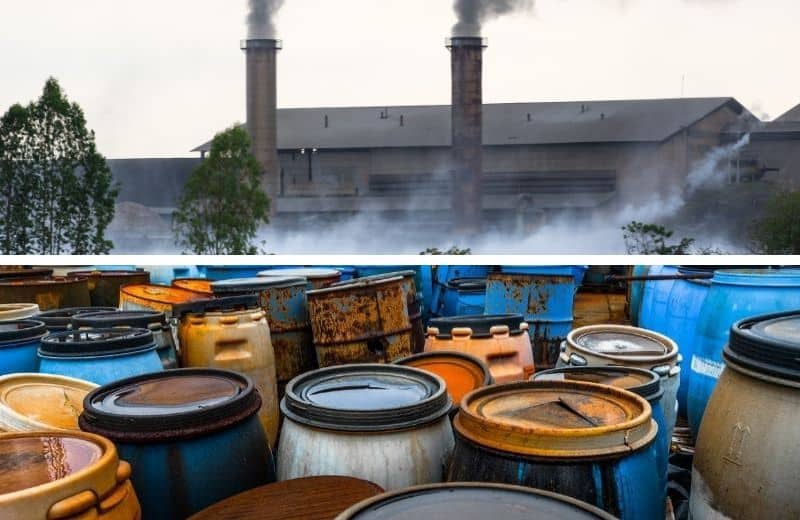
Radium (-226 & -228)
Two cancer-causing forms of radium, radium -226 & -228, were also detected in San Diego tap water. 0.40 pCi/L (picoCurie per liter) of combined radium was detected, which is 7.9x the EWG’s Health Guideline of 0.05 pCi/L, but well within the EPA’s MCL of 5 pCi/L.
Total trihalomethanes (TTHMs)†
Trihalomethanes (TTHMs) are also common in water that has been disinfected with chemicals. In San Diego water, 36.1 PPB of TTHMs were detected – 241x the EWG’s recommended Health Guideline of 0.15 PPB. The legal limit for TTHMs is 80 PPB.
Other Disinfection Byproducts
Aside from TTHMs and haloacetic acids, the EWG detected other cancer-causing disinfection byproducts – bromate, bromodichloromethane, bromoform, chlorite, chloroform, dibromoacetic acid, dibromochloromethane, dichloroacetic acid, and trichloroacetic acid – in San Diego tap water. Between 0.586 PPB and 274.4 PPB of these contaminants were detected – between 5.5x and 161x the EPA’s Health Guidelines (which differ for each contaminant). Bromate and chlorite are currently the only contaminants to have a legal limit (10 PPB and 1,000 PPB respectively) in water.
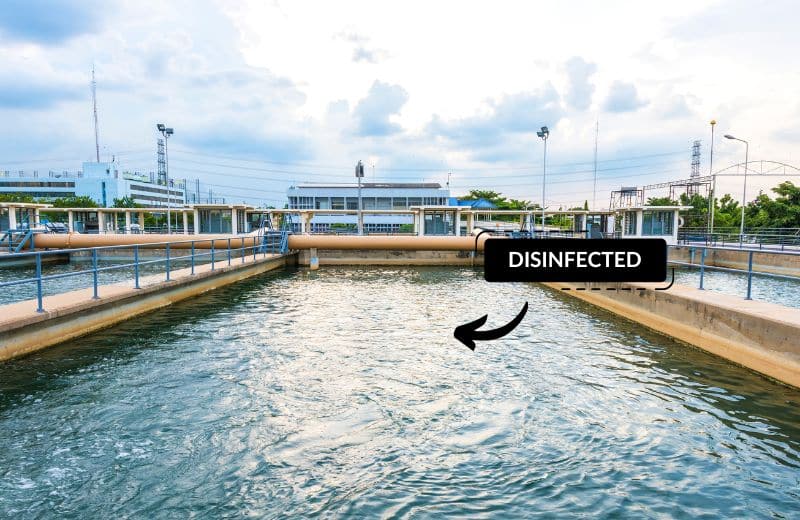
Uranium
Uranium, a heavy metal with toxic effects, occurs naturally in rocks and soils and can damage the kidneys if long-term exposure occurs. 1.81 pCi/L of uranium was detected in San Diego tap water – that’s 4.2x the EWG Health Guideline of 0.43 pCi/L. The EPA’s legal limit for this contaminant is 20 pCi/L.
The biggest water quality issue in San Diego, like many other water utilities in the US, is disinfection byproducts.
Adding chlorine or other chemical disinfectants to water is much cheaper than other sterilization methods (such as UV disinfection), which is why this practice is so common in public water treatment plants. Because many of these contaminants aren’t regulated by the EPA, water utilities don’t closely monitor or remove them from public tap water supplies.
🧫 Main Contaminants Found in San Diego Tap Water
Which other contaminants might be affecting tap water quality in San Diego? We’ve listed them below.
- Barium – A metal that’s found in certain sedimentary and igneous rocks; gets into water as these rocks break down and dissolve and may cause vomiting, abdominal cramps, fluctuating blood pressure, and muscle weakness if ingested in large amounts.
- Disinfection byproducts – Including bromide, bromochloromethane, chlorate, chlorodifluoromethane, monobromoacetic acid, and monochloroacetic acid; high doses may cause hormone disruption, increase the risk of liver and kidney cancers, and reduce nervous system activity.
- Fluoride – A naturally occurring mineral that is added artificially to most municipal water supplies to prevent costs associated with dental health problems; consuming excess fluoride may result in dental fluoridation (discoloration of the tooth enamel) and skeletal fluorosis (causing stiffness and pain in the joints).
- Manganese – Another naturally occurring mineral that contributes to water hardness and is often present alongside calcium; is safe to drink but may damage pipes, fixtures, and water-using appliances in high concentrations.
- Molybdenum – An essential trace element that occurs naturally in sediments and soils; has no health risk in normal concentrations but water sources near molybdenum mining operations may have dangerous levels of this contaminant.
- Nitrate – A form of nitrogen that pollutes water in discharge from septic systems, fertilizer runoff, and urban drainage; may increase cancer risk and affect the blood’s ability to carry oxygen if consumed in excess.
- Strontium – A heavy metal that may occur naturally in water (due to dissolving from rocks) or may pollute water due to human activities (such as mining and manufacturing operations and mining); unlikely to affect health in small doses but large amounts can be cancer-causing.
- Total chromium – Refers to a combination of both common forms of chromium in tap water: trivalent and hexavalent chromium (chromium-3 and chromium-6); hexavalent chromium has harmful health effects including an increased risk of liver damage and cancer.
- Vanadium – A metal that occurs naturally and enters water due to soil erosion and fossil fuel deposits; doesn’t usually affect health when present in normal concentrations in water.
⛲ San Diego Drinking Water in Public Places
The water in public places in San Diego, like bars, hotels, and restaurants, should be connected to the community water system, meaning it’s the same as the water that comes out of your taps at home.
There’s no law that says bars or restaurants should serve free tap water to their customers, but most will do so if you ask. This may vary from season to season – because California has major issues with drought and water is such a precious resource, many restaurants probably won’t serve tap water to anyone who doesn’t specifically ask for it.
You should also have access to clean water in hotel rooms, although it’s right to be wary about drinking bathroom tap water since this water is more likely to contain lead and other metals from bathroom plumbing. You can ask at reception if you’re unsure of the safety of the tap water, or request water from the hotel bar.
San Diego has a few public water fountains, but they’re not popular due to concerns about their safety and potential water contamination. If you’re really not keen to drink San Diego’s water supply, you can buy bottled water from the store – but bottled water is bad for the environment, so don’t make it a habit.
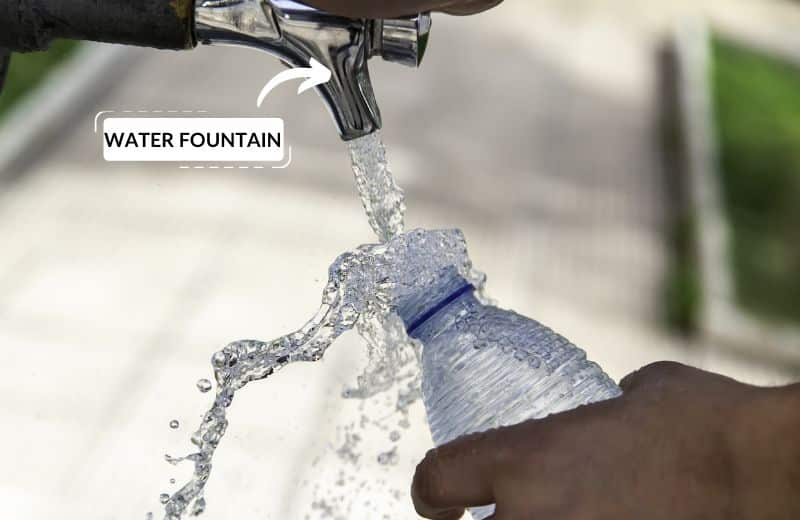
💬 Frequently Asked Questions
Is the water clean in San Diego?
Yes, for the most part, the drinking water in San Diego is clean. By “clean”, we mean that the water contains trace contaminants that aren’t present in harmful concentrations (according to EPA regulations). So, the water is clean enough to drink, but it isn’t pure or 100% clean and healthy.
Can you drink the tap water in San Diego 2024?
Yes, you can drink San Diego tap water. The City’s water is treated and disinfected to make it safe to drink according to federal Standards, and San Diego’s most recent annual Water Quality Report shows that no contaminants are present in the water above the EPA’s Maximum Contaminant Levels. However, you may still choose to filter your water in San Diego if you don’t want to drink trace amounts of harmful contaminants.
Does San Diego water have lead?
Some water in San Diego may have lead, while some may not. The lead content in the water depends on the area of the City and whether or not it’s served by lead distribution pipes. Old homes with lead plumbing are also likely to have lead-containing water. We recommend testing your water if you’re concerned about lead contamination.
Is San Diego water hard or soft?
San Diego water is hard, averaging about 276 parts per million (PPM) or 16 grains per gallon (GPG) of water hardness. This puts San Diego in the “very hard” water category – anything above 200 PPM or 10 GPG has this classification. You may notice hard water problems around your home, including mineral deposits, poor lather with soap, and inefficient appliances.
How is San Diego tap water disinfected?
San Diego tap water is disinfected with ozone or chlorine dioxide, depending on which water treatment plant it is pumped to. Both disinfectants have the same outcomes – they kill microorganisms and prevent recontamination as water travels through the pipes to your home. There are some issues with using chemicals to disinfect water, namely that disinfection byproducts are produced when these chemicals react with organic matter in the water.
Is San Diego water fluoridated?
Yes, San Diego fluoridates its drinking water supply. According to California State law, all public water systems that have more than 10,000 water service connections must fluoridate their water supplies if and when sufficient funding is available. San Diego started fluoridating its water in 2008 and adds around 0.7 to 0.8 mg/L of fluoride to the City’s water supply.
What city has the cleanest tap water in California?
According to a 2021 news article, the water provider with the best-tasting tap water in California is the Metropolitan Water District of Southern California. “Cleanest” and “best-tasting” don’t always go hand-in-hand, since many drinking water contaminants are tasteless. However, there is no official report that ranks the California cities in order of water cleanliness.
